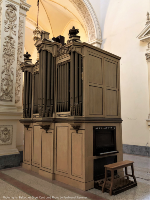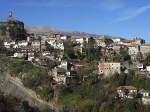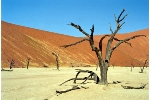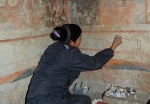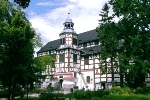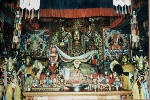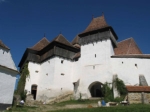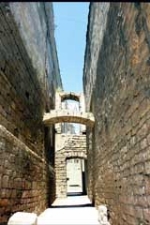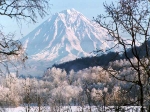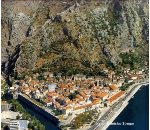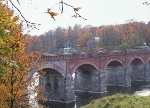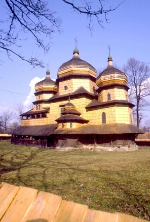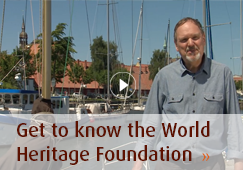Projects
The focus of the German World Heritage Foundation is to provide support to (potential) World Heritage sites that do not have the know-how and/or the financial means to protect their cultural or natural heritage. This support can take the form of the provision of grants as well as through the mediation of professionals.
Since it was founded, 22 projects in 16 countries worldwide have received funding from the foundation.
Restoration of the Merklin-Schütze organ in Havana (Cuba)
Funded in 2018
The Baltische Orgel Centrum Stralsund e.V. (Baltic Organ Association Stralsund) has completed the restoration of an organ built by the two renowned German masters Joseph Merklin and Friedrich Schütze in cooperation with the Swiss organ builder Ferdinand Stemmer. Built in 1858, this almost fully preserved organ which has been unplayable for decades, is one of the most valuable cultural assets of the historic part of the old town in Cuba’s capital, protected by UNESCO. Cuban craftsmen are being trained to maintain the instrument in the future. The project was funded by the Federal Foreign Office (Cultural Preservation Programme) and by the German World Heritage Foundation.
Development of a Master Plan for the Bay of Kotor (Montenegro)
Funded in 2015
In 2015 the German World Heritage Foundation funded a research project that had the objective of evaluating a new road project in the Bay of Kotor. The Bay of Kotor is located on the Dalmatian coast of Montenegro, it extends over a length of almost 30 kilometres inland and consists of several individual wells, separated by straits and bordered by steep hillsides. In 1979 the innermost of these basins were included in the UNESCO World Heritage List.
Development of a Design Statute in Gjirokastra (Albania)
Funded in 2014
Situated on the river Drinos, the old town of Gjirokastra is an authentic representation of the cultural heritage of the Ottoman period in the Balkans. The city’s image is characterized by the great citadel, the historic bazaar district and the 600 fortress-like residences. Although a series of restorations of the buildings have been carried out, especially after the inscription on the World Heritage List 2005, the World Heritage is facing serious threats. The German World Heritage Foundation supported the drafting of a design statute to create a legal framework for the necessary remedial measures.
The Namib Desert (Namibia)
Funded in 2011
Since 2013, a region in the southern part of the desert is recognized as a natural World Heritage property. With support from the German Commission of UNESCO Namibia applied to the German World Heritage Foundation for a grant to fund its preparation of the World Heritage nomination of the Namib Desert and was approved in 2009.
Restoration of early Buddhist murals (Nepal)
Funded in 2011
In 2009 the region of North Mustang was placed on the national tentative list of Nepal for potential inclusion on the UNESCO World Heritage List. Investigations carried out on paintings whose material fabric was threatened substantiated the hypothesis that North Mustang is a much dates older cultural centre of early Buddhist art development than it was previously thought. The project also funded the training of local people in order ensure that in the future they can autonomously manage the historic preservation, conservation and restoration for the conservation and development of World Heritage sites in Nepal.
Church of Peace Jawor (Poland)
Funded in 2009
The Churches of Peace in Jawor and Swidnica are now regarded as the greatest wooden sacred buildings in Europe. The Churches of Peace are the only Protestant-built places of worship on the World Heritage List – as opposed to originally Catholic churches that were later taken over by Protestants. The churches were inscribed on UNESCO’s World Heritage List in 2001. In 2009, the German World Heritage Foundation supported fire prevention safeguards at the Church of Peace in Jawor.
Restoration of Cultural Heritage from Karakorum in the Orkhon Valley (Mongolia)
Funded in 2007
In 2002 the German World Heritage Foundation had supported the nomination process of the Mongolian cultural landscape of the Orkhon Valley to the UNESCO World Heritage List. In a follow-up project, the Foundation supported the restoration of a small bronze statue of Buddha and a filigree bronze fitting. For technical reasons the work was not carried out in Mongolia but in Bonn, at the Institute of Prehistory and Early History Archaeology.
Restoration of the Village Street in Viscri (Romania)
Funded in 2006
In 1993 and 1999, UNESCO added seven villages with fortified churches in Transylvania to the World Heritage List, including the village of Viscri (Deutschweißkirch). The aim of the project supported by the German World Heritage Foundation was the restoration of the traditional structure of the village main street.
Nature Park in Kamchatka (Russia)
Funded in 2006
Since 1996 the Nature Park of Kluchevskoy has been on the UNESCO World Heritage List as part of the volcanic region of Kamchatka. The park is a key area for fossils and the natural diversity of the peninsula. The German World Heritage Foundation promoted the organization and implementation of a long-term field study in the water reservoirs and river – spawning areas of the volcanic region, which allowed the detection of fish species, defining the main spawning areas and the assessment of salmon stocks.
Caves of Mbanza-Ngungu (Democratic Republic of Congo)
Funded in 2005
The German World Heritage Foundation supported the preparation of the first nomination of the Republic of Congo for the proposed inscription of the Caves of Mbanza-Ngungu on the World Heritage List as well as the carrying out of a workshop on the nomination of other cultural sites for the Tentative List of the African country.
Walled City of Baku (Azerbaijan)
Funded in 2004
In the year 2000 the walled part of the city of Baku was added to the UNESCO World Heritage List. This unique historic ensemble has architectural influences from various cultures: Zoroastrian, Sasanian, Arabic, Persian, Shirvani, Ottoman and Russian. In November 2004 the German World Heritage Foundation supported an international round table in Baku. High-level international, national, regional and local political and conservation representatives discussed an action plan that could ensure the future protection of the site.
Kronotsky Biosphere Reserve (Russia)
Funded in 2004
Kronotsky Biosphere Reserve is one of seven conservation areas that belong to the World Heritage site ‘Volcanoes of Kamchatka’. The main volcanic areas of the Kamchatka Peninsula were added to the World Heritage List in 1996. They are among the most important volcanic regions in the world. In order to improve conservation conditions the German World Heritage Foundation supported the establishment of a communication structure in the Kronotsky Biosphere Reserve.
Zabaikalsky National Park (Russia)
Funded in 2003
The Zabaikalsky National Park is one of seven conservation areas that belong to the World Heritage site of ‘Lake Baikal’. Lake Baikal was inscribed on the World Heritage List in 1996 and is one of the few natural sites that meets all four possible natural World Heritage criteria. In order to improve conservation conditions the German World Heritage Foundation supported the development of a communication structure in Zabaikalsky National Park.
The Harbour town of Kotor (Montenegro)
Funded in 2003
The natural and cultural-historical region of Kotor with its natural harbour on the Adriatic coast was included in the UNESCO World Heritage List in 1979. The German World Heritage Foundation funded an international training seminar for professionals in the region, drawing up a management plan for Kotor. The plan deals with the various problems of the World Heritage and in particular its authenticity (historical genuineness), which is highly vulnerable to uncontrolled urbanization.
Harmonization of Tentative Lists in the Baltic States
Funded in 2003
In June 2003, an international seminar took place on the harmonization of national (World Heritage) Tentative Lists in Estonia, Latvia and Lithuania. Cultural and natural heritage experts came together in Kuldiga (Latvia) to discuss future sites for the World Heritage List in the three countries and to harmonize their proposed sites. The German World Heritage Foundation supported this international seminar.
Historic wooden churches in the Carpathian Basin
Funded in 2003
With the support of the German World Heritage Foundation Ukraine prepared a survey and architectural study of a variety of wooden churches (15th-18th century) of different types. The results formed the basis for the Ukrainian part of a cross-border World Heritage nomination of wooden churches in the Carpathian Basin.
Monuments of the Historic Centre of L'viv
Funded in 2002
In 1998 the Historic Centre of L'viv (Lvov) was added to the World Heritage List. In addition to important religious monuments, there is a variety of residential buildings often with late medieval cores, courtyards and rich facades, however some of these are also at great risk. The Foundation supported the city administration in their efforts to save historic town houses that were empty and threatened by decay through an emergency programme.
Cultural Landscape of Orkhon Valley
Funded in 2002
The German World Heritage Foundation faciliated the development of a medium-term management and conservation plan for the cultural landscape of Orkhon Valley in Mongolia, which at the time was only represented on the World Heritage List by a natural heritage site. A prerequisite for a successful World Heritage application to UNESCO was a management plan for this area where Genghis Khan had built his capital Kharakorum in the 13th century. In July 2004, the World Heritage Committee approved the inclusion of the Orkhon valley on the UNESCO World Heritage List.
